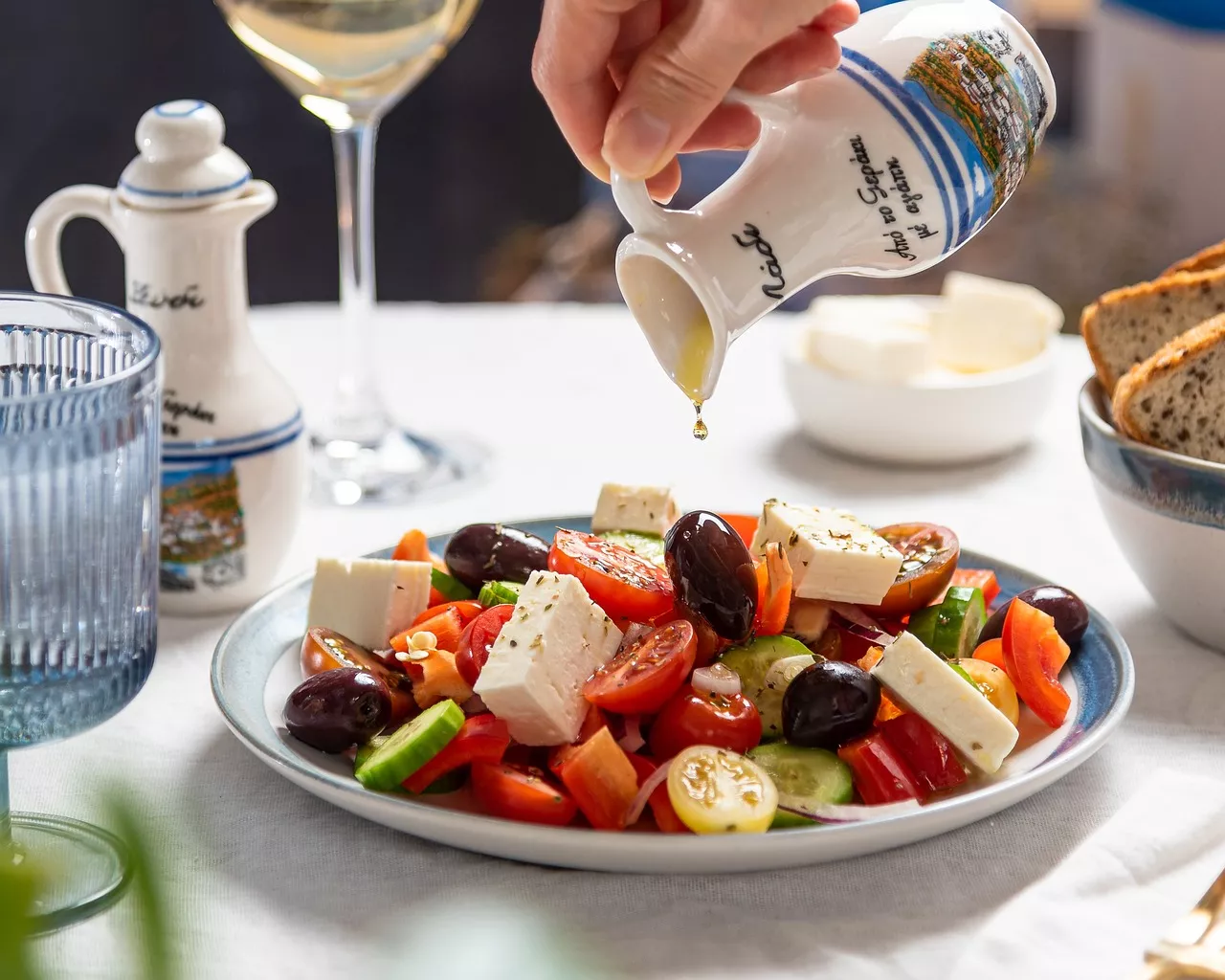Traditional Greek dishes and their origins
Greek cuisine is a treasure trove of traditional dishes that have stood the test of time. One such dish is moussaka, a layered casserole made with eggplant, minced meat, and béchamel sauce. With its origins traced back to the Byzantine Empire, moussaka has become a beloved comfort food in Greece and beyond. The flavors of the tender eggplant, rich meat, and creamy sauce meld together to create a dish that is both hearty and satisfying. Whether enjoyed as a main course or a side dish, moussaka is a true representation of the depth of Greek culinary heritage.
Another traditional Greek dish that deserves recognition is souvlaki. Originating in ancient Greece, souvlaki is a popular street food made with skewered and grilled meat, typically pork or chicken. The meat is marinated in a mixture of olive oil, lemon juice, garlic, and herbs, imparting a tantalizing flavor. Served with pita bread, tzatziki sauce, and a side of Greek salad, souvlaki is a delicious and convenient meal that captures the essence of Greek street food culture.
The importance of olive oil and herbs in Greek cooking
When it comes to Greek cuisine, two ingredients reign supreme: olive oil and herbs. Olive oil is not just a cooking medium in Greece, but a way of life. With its abundant olive groves, Greece produces some of the finest olive oil in the world. The Greeks use olive oil generously in their cooking, adding a distinct richness and flavor to their dishes.
Herbs also play a vital role in Greek cooking, adding depth and complexity to the flavors. From oregano and thyme to mint and dill, Greek cuisine incorporates a wide variety of herbs. These aromatic herbs are used in everything from meat marinades to salad dressings, infusing each dish with a burst of freshness.
Greek street food and snacks
Greek street food is a vibrant reflection of the country's culinary heritage. One popular street food item is the spanakopita, a savory pastry filled with spinach, feta cheese, and herbs. The flaky phyllo dough encases a deliciously savory filling, creating a perfect balance of textures and flavors. Spanakopita is not only a convenient on-the-go snack but also a beloved appetizer at Greek gatherings.
Another must-try Greek street food is the koulouri, a circular bread ring covered in sesame seeds. These crunchy and chewy bread rings can be found at street vendors throughout Greece. Koulouri is a popular breakfast item, often enjoyed with a cup of Greek coffee or a glass of fresh orange juice. Its simple yet satisfying taste makes it a favorite among locals and tourists alike.
Greek desserts and pastries
No exploration of Greek cuisine would be complete without indulging in their delectable desserts and pastries. One such dessert is loukoumades, small deep-fried dough balls drizzled with honey syrup and sprinkled with cinnamon. These bite-sized treats are crispy on the outside, light and fluffy on the inside, and irresistibly sweet. Whether enjoyed as a snack or a dessert, loukoumades are a true delight for anyone with a sweet tooth.
Another iconic Greek dessert is baklava, a rich and decadent pastry made with layers of phyllo dough, nuts, and honey syrup. The combination of the crunchy phyllo, the nutty filling, and the sticky sweetness of the syrup creates a symphony of flavors and textures. Baklava is often enjoyed during special occasions and festive celebrations, making it a true symbol of Greek hospitality and tradition.
Greek wines and spirits
Greece is not only known for its cuisine but also for its exceptional wines and spirits. With a history of winemaking dating back thousands of years, Greece offers a wide variety of wines that are as diverse as its food. From the crisp and aromatic whites of Santorini to the bold and robust reds of Nemea, Greek wines showcase the unique terroir of the country.
One notable Greek spirit is ouzo, an anise-flavored liqueur that is often enjoyed as an aperitif. With its distinct licorice flavor and clear appearance, ouzo is a beloved beverage in Greece. It is traditionally served with mezes, small plate appetizers that are perfect for sharing. The combination of ouzo, mezes, and good company creates a convivial atmosphere that is quintessentially Greek.
Greek food traditions and celebrations
Food plays a central role in Greek culture, with many traditions and celebrations revolving around it. One such tradition is the breaking of the pomegranate on New Year's Eve. According to Greek folklore, the number of seeds that scatter from the broken pomegranate symbolizes the abundance and prosperity for the coming year. This tradition is often accompanied by a feast of traditional dishes, creating a festive and joyous atmosphere.
Another important celebration in Greek culture is Easter, which is marked by a feast known as the Paschal Lamb. The lamb is roasted whole and served with a variety of side dishes, including tzatziki, roasted potatoes, and Greek salad. This communal feast brings families and friends together to celebrate the resurrection of Christ and the arrival of spring.
Exploring Greek food beyond the popular dishes
While gyros and feta cheese may be the first things that come to mind when thinking about Greek cuisine, there is so much more to discover. Each region of Greece has its specialties, offering a unique blend of ingredients and cooking techniques. For example, the island of Crete is known for its healthy and flavorful Mediterranean diet, featuring dishes like dakos, a barley rusk topped with tomato, feta cheese, and olive oil.
The Peloponnese region is famous for its hearty meat stews, such as stifado, a slow-cooked beef stew flavored with onions, tomatoes, and spices. And in the island of Rhodes, you can find a dish called pitaroudia, a delicious fritter made with chickpea flour, herbs, and spices. Exploring the lesser-known dishes of Greece allows you to truly appreciate the diversity and depth of Greek cuisine.
Conclusion: Embracing the diversity of Greek cuisine
Greek cuisine is a culinary journey that goes beyond gyros and feta cheese. It is a celebration of history, tradition, and the bountiful flavors of the Mediterranean. From the traditional dishes with ancient origins to the vibrant street food and the indulgent desserts, Greek cuisine offers something for everyone.
So, next time you think of Greek food, remember that there is so much more to explore and savor. Venture beyond the familiar and embrace the richness and diversity of Greek cuisine. From the coastal villages to the mountainous regions, each bite tells a story of Greece's culinary heritage. So, grab a fork, raise a glass, and embark on a gastronomic adventure through the wonders of Greek food culture. Opa!

 From Asado to Empanadas Food Culture Argentina
From Asado to Empanadas Food Culture Argentina From Bean to Cup Crafting Your Own Delicious Coffee
From Bean to Cup Crafting Your Own Delicious Coffee



